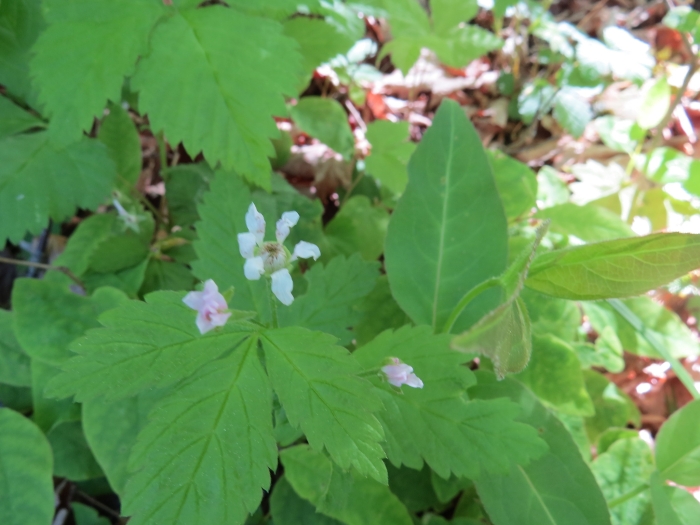Dwarf Red Blackberry
(Rubus pubescens)
Dwarf Red Blackberry (Rubus pubescens)
/
/

Howard Williams
CC BY-SA 4.0
Image By:
Howard Williams
Recorded By:
Copyright:
CC BY-SA 4.0
Copyright Notice:
Photo by: Howard Williams | License Type: CC BY-SA 4.0 | License URL: http://creativecommons.org/licenses/by-sa/4.0/ | Rights Holder: Howard Williams | Publisher: iNaturalist | Date Created: 2021-06-02T10:32:23-07:00 |




















Estimated Native Range
Summary
Rubus pubescens, commonly known as Dwarf Red Blackberry or Dewberry, is a low-growing herbaceous perennial native to moist coniferous and mixed-wood forests, as well as wet meadows and stream banks across Canada and the northern United States. This plant typically has trailing stems that are 4-12 inches long and upright petioles that reach less than 8 inches in height. Its compound leaves are composed of three diamond-shaped leaflets with a toothed margin. From late May to late June, it produces flowers with five white petals, which are modest in size but can be quite numerous, leading to the production of shiny red fruit clusters that are attractive to wildlife.
Dewberry is valued for its ability to stabilize soil and provide food for wildlife. It is often used in restoration projects and naturalized plantings. Gardeners may also cultivate it for its edible fruit, which can be used in jams, jellies, and pies. It prefers moist, well-drained soils and can tolerate partial shade, although it will produce more fruit in full sun. While it is generally low-maintenance, it can become invasive in some conditions, spreading through its rhizomes to form dense thickets.CC BY-SA 4.0
Dewberry is valued for its ability to stabilize soil and provide food for wildlife. It is often used in restoration projects and naturalized plantings. Gardeners may also cultivate it for its edible fruit, which can be used in jams, jellies, and pies. It prefers moist, well-drained soils and can tolerate partial shade, although it will produce more fruit in full sun. While it is generally low-maintenance, it can become invasive in some conditions, spreading through its rhizomes to form dense thickets.CC BY-SA 4.0
Plant Description
- Plant Type: Shrub, Herb
- Height: 0.3-0.5 feet
- Width: 4-8 feet
- Growth Rate: Rapid
- Flower Color: Pink, White
- Flowering Season: Spring, Summer
- Leaf Retention: Deciduous
Growth Requirements
- Sun: Full Sun, Part Shade
- Water: Medium, High
- Drainage: Medium
Common Uses
Bee Garden, Bird Garden, Edible*Disclaimer: Easyscape's listed plant edibility is for informational use. Always verify the safety and proper identification of any plant before consumption., Groundcover, Low Maintenance
Natural Habitat
Moist coniferous and mixed-wood forests, wet meadows, and stream banks
Other Names
Common Names: Dwarf Red Blackberry, Trailing Dewberry, Dwarf Red Raspberry, Creeping Red Raspberry, Dewberry, Swamp Red Raspberry, Trailing Red Raspberry
Scientific Names: , Rubus pubescens, Cylactis aegopodioides, Cylactis egopodioides, Cylactis egopodioides, Cylactis lyncemontana, Cylactis montana, Cylactis pubescens, Cylastis egopodioides, Cylastis egopodioides
GBIF Accepted Name: